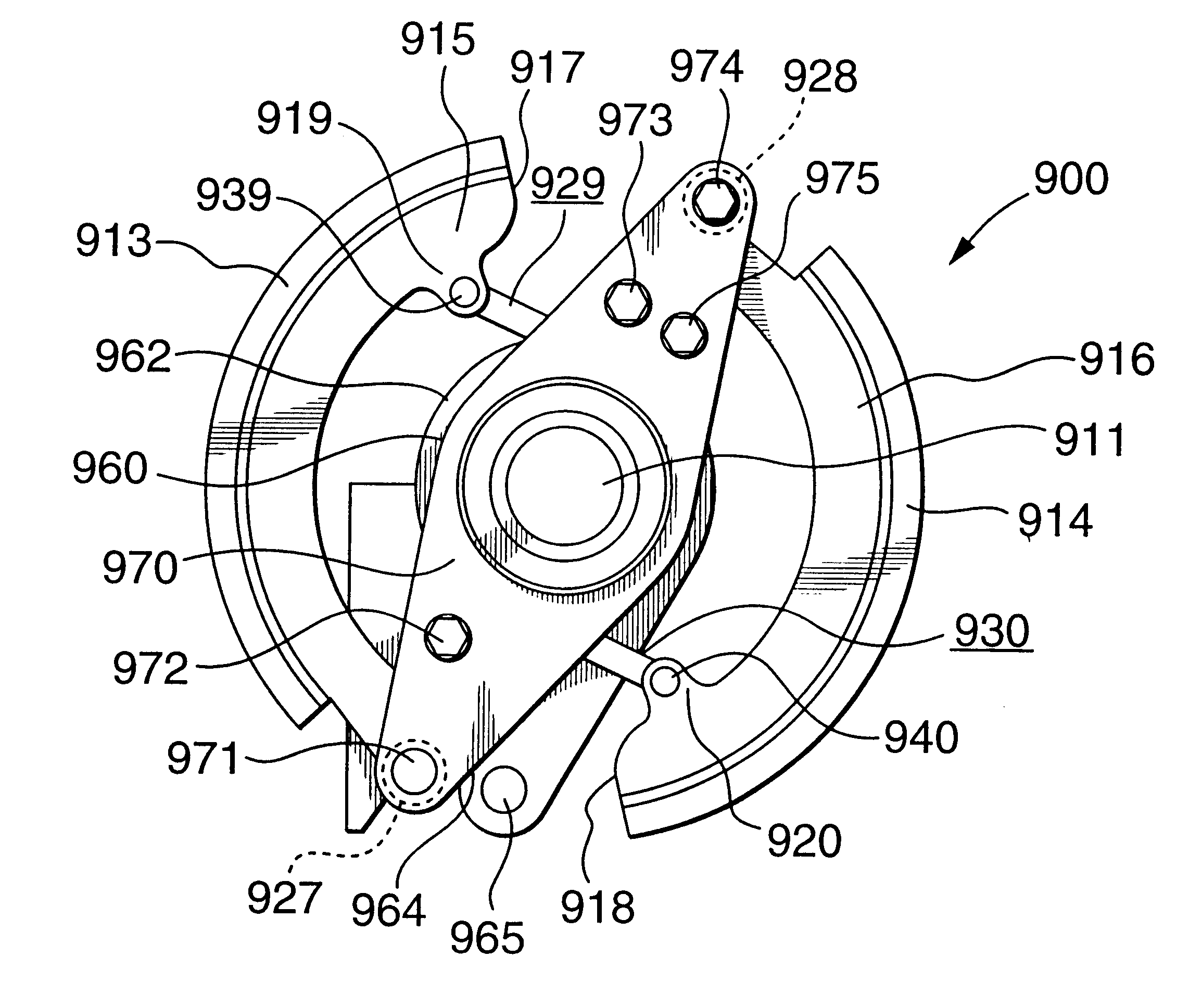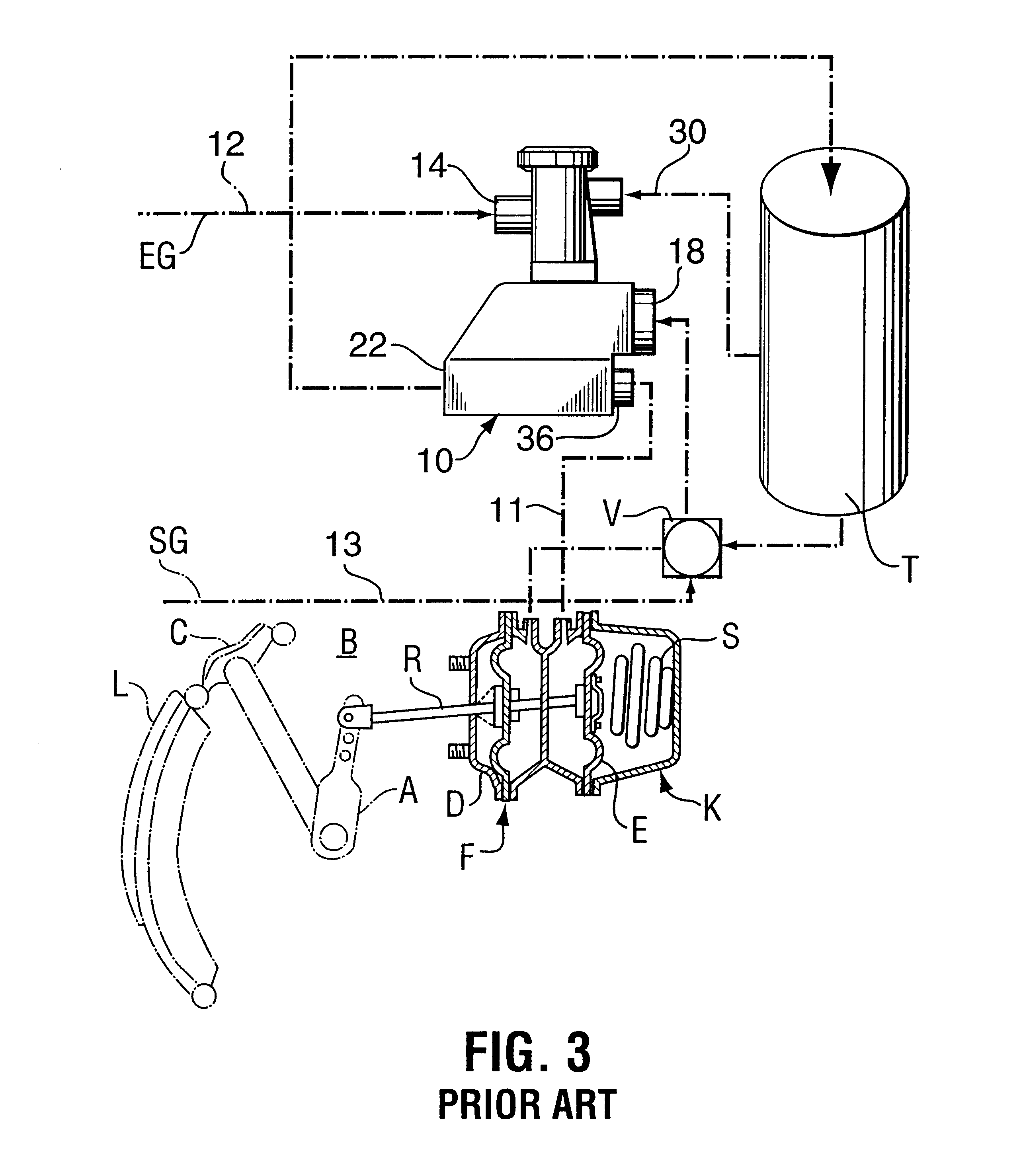Air brakes for trucks
a technology for air brakes and trucks, applied in the direction of actuators, brake types, brake actuating mechanisms, etc., can solve the problems of ratcheting taking up slack, reducing the efficiency of compressors, and still having the needed stoke of brakes
- Summary
- Abstract
- Description
- Claims
- Application Information
AI Technical Summary
Benefits of technology
Problems solved by technology
Method used
Image
Examples
Embodiment Construction
(i) Description of FIG. 1 and FIG. 2
Before describing embodiments of this invention, a brief description of a typical air brake and its operation will be given. As seen in FIG. 1 and FIG. 2, a typical air brake includes an auxiliary reservoir (AR) containing compressed air which is connected to a central valve including an operable / closable compressed air by-pass (BP) and operable / closable exhaust vent (EX). The central valve (CV) is connected to a spring-loaded, brake cylinder (BC) containing a cylinder piston (CP), which is connected to a brake rod (BR) and operating against spring (S). The brake rod (BR) is connected to a brake shoe (BS) which is urged to engage the wheel (W). The central valve (CV) is connected to a principal source of compressed air by a compressed air line (AL).
FIG. 1 shows the brake "applied" position, while FIG. 2 shows the brake "released" position.
As seen in FIG. 1 and FIG. 2, the operation of these conventional air brakes is as follows. To apply the brake...
PUM
 Login to View More
Login to View More Abstract
Description
Claims
Application Information
 Login to View More
Login to View More - R&D
- Intellectual Property
- Life Sciences
- Materials
- Tech Scout
- Unparalleled Data Quality
- Higher Quality Content
- 60% Fewer Hallucinations
Browse by: Latest US Patents, China's latest patents, Technical Efficacy Thesaurus, Application Domain, Technology Topic, Popular Technical Reports.
© 2025 PatSnap. All rights reserved.Legal|Privacy policy|Modern Slavery Act Transparency Statement|Sitemap|About US| Contact US: help@patsnap.com



